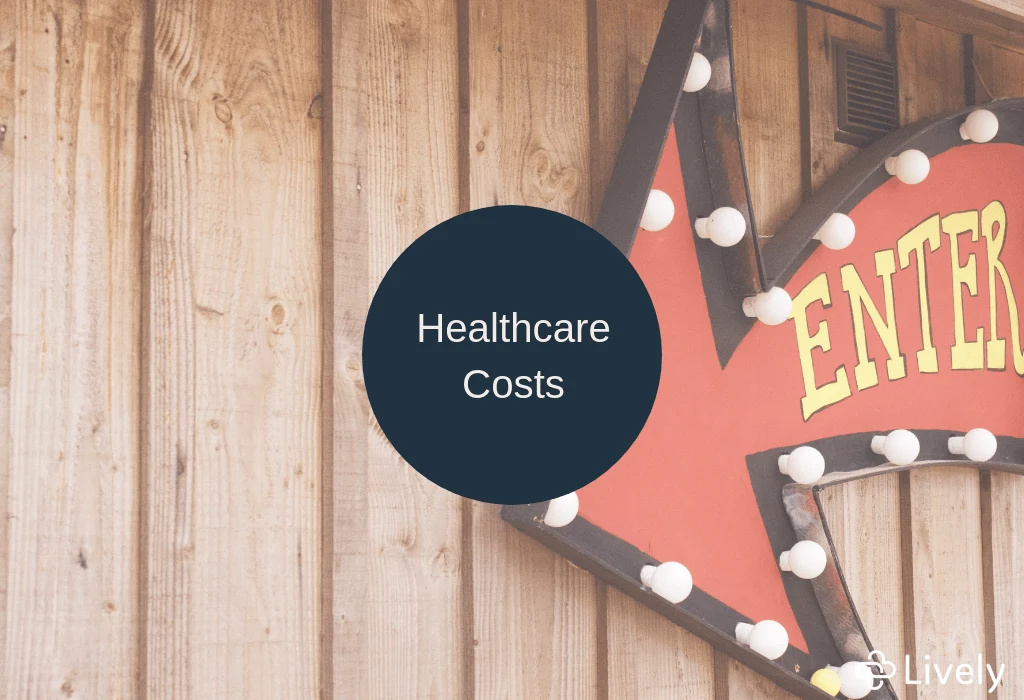The Lively Blog
SIGN UP FOR OUR
Newsletter
Stay up to date on the latest news delivered straight to your inbox
Expected HDHP Costs
Lauren Hargrave · September 18, 2018 · 3 min read

High deductible health plans (HDHP) are by far the most affordable option for healthcare from a monthly premium standpoint. This makes them really attractive to younger, healthier people who don’t need a lot of care. But if you need a lot of care, an HDHP could end up costing you more than a more inclusive plan.
Basic Costs for HDHPs
Premium. This is the monthly fee you pay to have insurance. It doesn’t count toward your deductible or out-of-pocket maximum.
Your deductible is the amount of healthcare costs you must pay before your health insurance starts to pay for your care. Under HDHPs preventative care is always covered before the deductible is met, but all other care will require that you meet your deductible before insurance will cover any of the costs. Unfortunately, your monthly premium doesn’t count toward this sum.
Out-of-pocket maximum. This is the maximum amount you can pay for your healthcare costs per year. The out-of-pocket maximum for HDHPs are regulated and cannot exceed $6,650 for an individual and $13,300 for a family. Unfortunately, your premiums don’t count toward this maximum.
Copays or coinsurance. HDHPs do not have copays or coinsurance before your deductible is met.
The HSA
With HDHPs, you have the option to start a health savings account (HSA) which is a pre-tax savings account you can use for any medical expenses you choose. Some HSA’s accrue interest, others allow you to invest the money, but either way, you don’t lose the money at the end of the year, so the money you don’t spend, compounds year-to-year. That means if you end up needing an expensive procedure later, you might have enough money to offset the majority or even all of your out-of-pocket cost.
If you’re thinking about contributing to an HSA to complement your HDHP, you’ll want to include your anticipated monthly contribution to the overall calculation of healthcare costs, although at least with HSAs, you are getting some long-term benefit too!
Types of HDHPs
HDHPs can also be a preferred provider organization (PPO) plan or a point-of-service (POS) plan. What makes it a high deductible plan is: a) the amount of your deductible, b) the fact that only preventative care will be covered before you reach your deductible, and c) your ability to open an HSA when purchasing the health plan.
You might have also heard of the metal rating system used for health plans: Bronze, Silver, Gold and Platinum. Plans that are categorized as Bronze, typically have the lowest premiums and the insurance company covers the least amount of care. Conversely, Platinum plans typically have the highest premiums and the insurance company covers the most amount of care.
Since HDHPs are high-deductible plans, you’ll likely only find them in the Bronze category.
If you’re young and relatively healthy, an HDHP could be an economic option for you. But before you make your choice, make sure to consider the healthcare you’ve received over the past two years and any life changes you anticipate in the coming year (e.g. having a child). You’ll want to calculate what those same services would have cost you if you with an HDHP. Then compare that with your other healthcare options.
If you need more help with health account decisions, check out our blog. We will make you a healthcare benefits expert in no time, without any extra work or effort on your end.

Benefits
2025 and 2026 HSA Maximum Contribution Limits
Lively · May 9, 2024 · 3 min read
On May 9, 2024 the Internal Revenue Service announced the HSA contribution limits for 2025. For 2025 HSA-eligible account holders are allowed to contribute: $4,300 for individual coverage and $8,500 for family coverage. If you are 55 years or older, you’re still eligible to contribute an extra $1,000 catch-up contribution.

Benefits
What is the Difference Between a Flexible Spending Account and a Health Savings Account?
Lauren Hargrave · February 9, 2024 · 12 min read
A Health Savings Account (HSA) and Healthcare Flexible Spending Account (FSA) provide up to 30% savings on out-of-pocket healthcare expenses. That’s good news. Except you can’t contribute to an HSA and Healthcare FSA at the same time. So what if your employer offers both benefits? How do you choose which account type is best for you? Let’s explore the advantages of each to help you decide which wins in HSA vs FSA.

Health Savings Accounts
Ways Health Savings Account Matching Benefits Employers
Lauren Hargrave · October 13, 2023 · 7 min read
Employers need employees to adopt and engage with their benefits and one way to encourage employees to adopt and contribute to (i.e. engage with) an HSA, is for employers to match employees’ contributions.
SIGN UP FOR OUR
Newsletter
Stay up to date on the latest news delivered straight to your inbox
